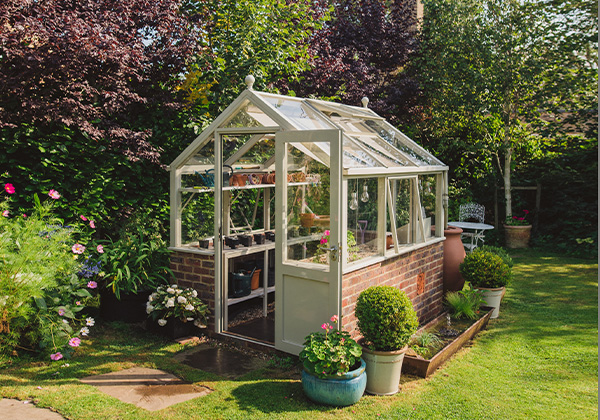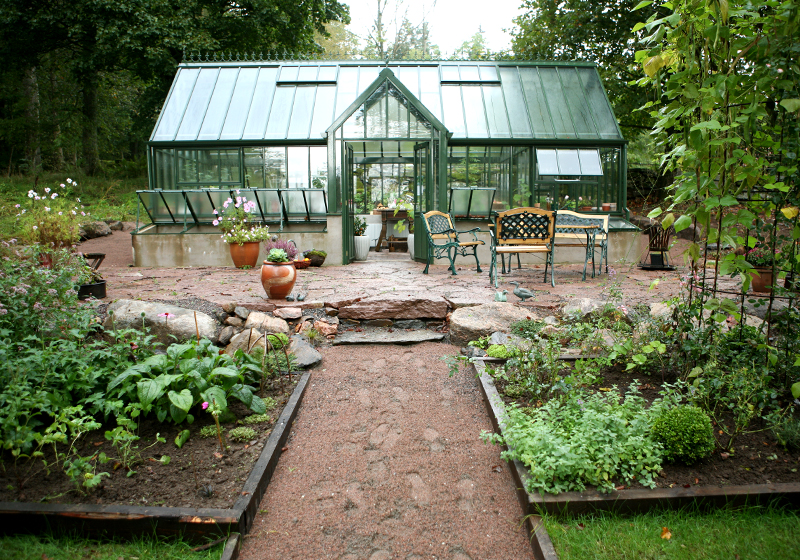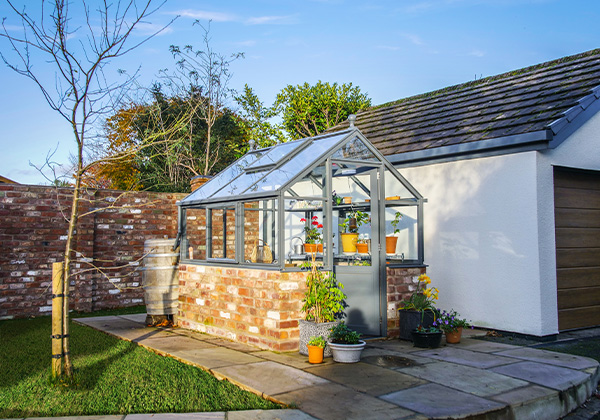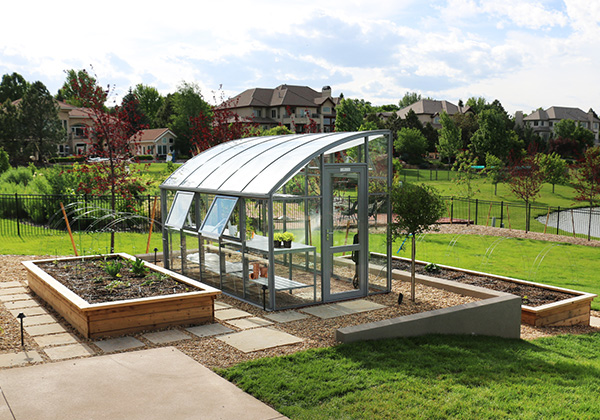What should you consider when buying a greenhouse? Most people look first at the cost, then at the size, and only then at what they’d like to grow. But this order is backwards. The first consideration should always be what you want to use a greenhouse for. That decision will determine both the size and its interior requirements, which in turn are major factors impacting cost.

For example, If you want to grow orchids, for instance, you may not need a very large greenhouse, but you must consider how you’ll maintain the temperature, humidity, and lighting that the particular orchids you desire prefer. Suppose you have in mind growing vandas in New England. If so, you’ll need a greenhouse that will keep temperatures in the 80s all year long, with high humidity and light levels. Your greenhouse needs will be dramatically different if you’ll instead be growing greens for the table. In this case, you can have greenhouse temperatures in the 50s and moderate light levels, so a polytunnel might meet your needs. Alternatively, you may want to start seedlings in the spring to be planted outdoors in summer. Your greenhouse requirements again would be specific to this use. The greenhouse could be relatively small, but it would have to be heated or have heat mats. You may also need supplemental lighting – up to 12-14 hours a day — to enhance germination.

Other factors can help determine how big a greenhouse you need. One is your level of gardening experience. Often, an experienced gardener will fill a large greenhouse. My lean-to greenhouse is 30’x10’. I filled it with citrus trees and other plants in hardly any time at all. I then built a 20’x14’ freestanding greenhouse for growing vegetables. Now I’m considering using a high tunnel for vegetable growing because both greenhouses are full. For gardeners without a lot of gardening experience, make take a lot longer. For you, an 8’x10’ greenhouse can be a good starting place. But be aware that a greenhouse of this size will heat up and cool down quite quickly and shelf space can be limited.
A few other things should be considered when buying a greenhouse, things that have to do with construction and design:
- The materials from which a greenhouse is built matter. For instance, wood conducts heat much less than does aluminum or steel. Also, thicker support structure materials are generally preferable to thinner ones.
- A greenhouse wit thin metal extrusions may have cross bracing to prevent it flexing in strong winds. If the greenhouse flexes the glazing may pop out.

Tradition 6 Planthouse, Cheshire, UK - When looking at glazing, consider its light transmission. Single-pane glass has a light transmission of about 94%. Although double-pane glass helps to maintain higher interior temperatures, it has a light transmission of only about 78-84%. If you move plants out of a double-paned greenhouse in spring, they may suffer some leaf burn while adjusting to the more intense outdoor sunlight. Single-pane polycarbonate glazing is another option. It has a light transmission slightly lower than glass, but as the thickness and/or number of layers increases, light transmission drops to as little as 74%. Yet another choice is polyethylene film, which can be quite inexpensive. A single layer of it has a light transmission of about 85%, which drops to 70- 75% when multiple layers are added. It also has a fairly short lifespan of two to four years.
- When considering glazing. also inspect the method used to hold it in place. The best method is for the glazing to be slotted into the extrusion. Glazing held by clips can pop out, especially if the greenhouse can flex.
- Look at the number of greenhouse openings. Experts say that about 25% of the glazing (including the door) should be openable to let out summer heat.
- Check the seals around the door. Loose fitting doors allow heat to escape in winter.
- Consider the greenhouse’s interior height. If too short, standing upright may be difficult and reaching over the workbench may be a problem.

The Vista, Colorado, USA - Decide what type of foundation your greenhouse will have. Simply setting it down on bare ground allows animals to tunnel under it and also corrodes the base. At the very least, set your greenhouse on brick or pressure-treated wood. Best is a brick or concrete foundation to which the greenhouse can be bolted.
- Decide what the floor should be made of. It can be soil (messy when wet), gravel (allows water to drain but may allow weeds to grow), pavers laid in sand or bluestone (good for drainage), or poured concrete (will need a drain installed).
- If you require additional heat and light, be aware that your greenhouse will probably need electrical power to it.
- Having a water line into your greenhouse is also very convenient.
- Consider installing gutters on your greenhouse to collect rainwater runoff.
- Decide what type of interior benches you want. Mine are made of heavy-gauge wire, which allows heat to rise and soil to fall through. Store pots and trays the benches
- If possible, include a table or bench space to repot plants.




